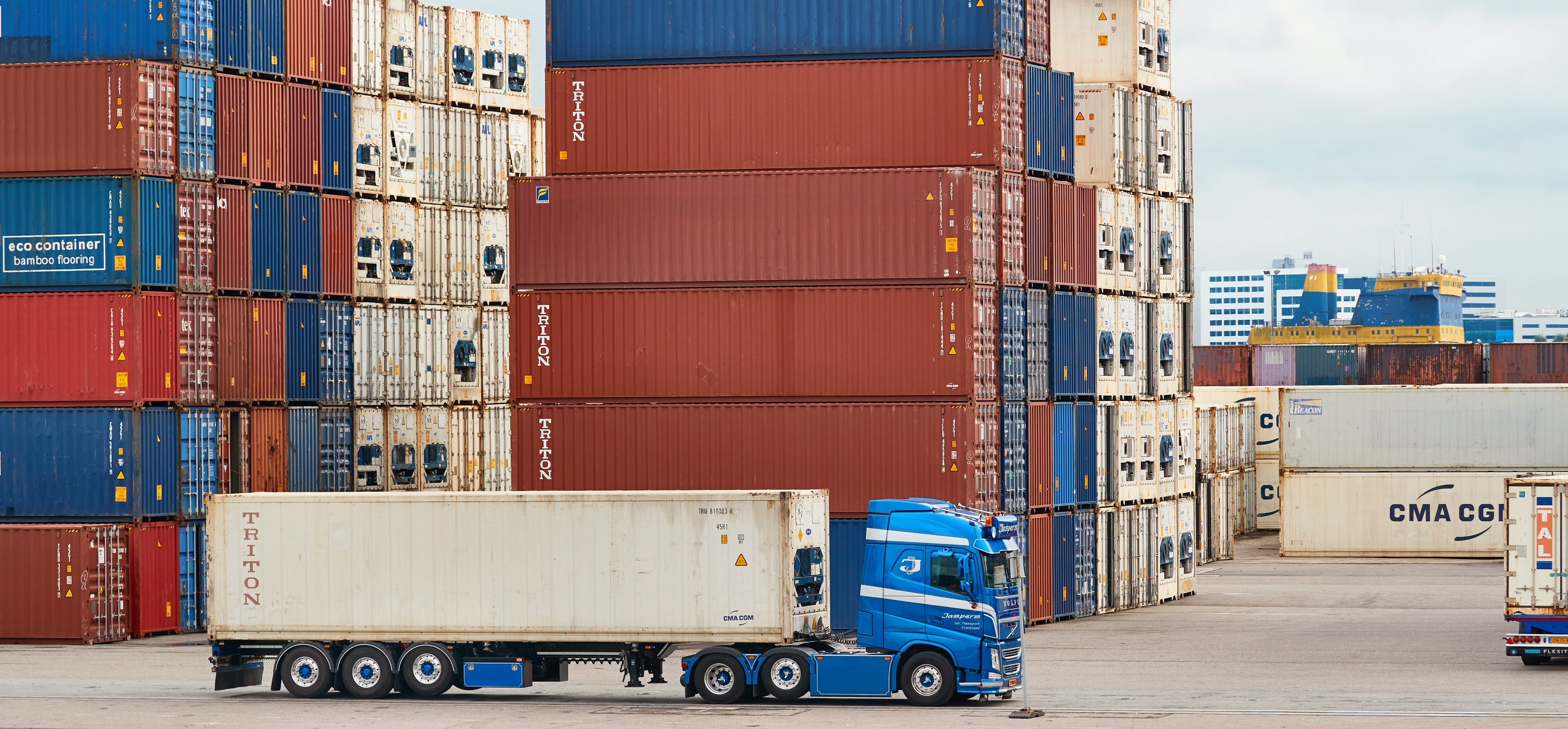What challenges will ocean shipping create for supply chains in 2022?
Like other modes of transportation, ocean freight comes with its own profile of benefits and challenges.
The industry is currently facing bottlenecks as capacity continues to remain constrained. Global shipping demand is also forecasted to continue to increase throughout the year. With COVID-related shutdowns and delays occurring at major container terminals around the world; closures, congestion, and their impacts on lead times have become difficult to predict. Preparation is key.
Certain industries, like those below, rely heavily on ocean freight to operate their business and could be at risk to be more adversely impacted in 2022.
- Bulk Goods
- Electronics
- Automotive Parts
- Construction Materials
What’s challenging the ocean freight industry? Let’s explore this question further:
Record High Rates
The volume of ocean cargo saw a massive uptick since the second half of 2020, in large part due to the ongoing COVID-19 pandemic. The industry is seeing record high ocean cargo rates of 466% on the previous year (2020), constricting capacity and increasing demand.
What’s causing this upsurge in ocean freight prices?
- Trade restrictions between nations
- Worker/labor shortage due to lockdowns
- Fewer cargo ships and containers
- Increased demand for e-commerce and consumer products
“As Asia-Pacific production ramped up, competition was on to source the scarce goods and to get access to the limited transportation capacity available to move these goods to their destinations. When there's more demand than supply, prices go up, as we saw in previous months with record -high prices for ocean and air cargo moves.”
-Ed Ryan, CEO of Descartes Systems Group (Forbes)
Container Imbalance
One of the biggest threats to capacity and smooth movement in the ocean cargo industry is the inability to source containers. Shippers are currently facing a shortage, also known as a container imbalance.

Without containers the ability to ship goods via ocean freight is not possible. The large increase in consumer products means too much freight and not enough containers to ship it. Demand has made it increasingly difficult and expensive to source containers and fulfill capacity. The result is an inability to efficiently move inventory and a container shortage.
The shortage in containers has led shippers to purchase SOC’s, also known as Shipper Owned Containers. In general, most containers utilized in ocean freight are known as COC (Carrier Owned Containers), which are rented out to shippers/organizations that need a container to match capacity. But with a lack of COC available due to an imbalance, shippers are forced to invest into buying their very own. SOC cost upwards of $8,000 per container leading to thin margins and poor inventory turnover.
Lack of Visibility
When it comes to visibility, the traditional, and often manual processes of ocean freight leaves shippers with lost time and increased costs. With no way of gaining real time tracking of containers and cargo due to siloed technology, the industry is left to make business decisions with poor data. When shippers don’t receive ETAs or alerts of containers entering or exiting ports, service teams are unable to communicate critical information to their customers.
This leads to poor decisions, disruptions in transportation, and poor customer service. In addition, shippers can’t receive regular updates about their containers sitting in ports, leading to expensive demurrage and detention fees.
Port Congestion
Port congestion and delays are also common issues overtaking the sea freight industry. Containers can be held up for weeks, even months at a time, largely in part due to the shortage of truck transportation from the port. In November of 2021, the LA Port was backed up with 179 cargo ships waiting for space to free up.

Port delays are affecting supply chains across many industries. Consumer electronics, construction material, and automotive parts are all feeling the effects of port congestion in 2022, causing an increase in consumer prices and a 172% increase in ‘out of stock’ products online.
“When comparing the last 12 rolling months versus 2019, U.S. container import volume is up 21% versus 2019… Wait time at the Port of Los Angeles is down very slightly in October at 14.21 days versus 14.51 days in September and 15.31 days in August. However, wait times in October at East Coast ports are also extensive with the Ports of New York/New Jersey at 8.41 days and the Port of Savannah at 9.71 days.”
-Chris Jones, Executive Vice President of Industry and Services, (Descartes)
Truck Driver Shortage
How does a lack of truck drivers affect the ocean freight industry?
As mentioned above, the shortage of truck drivers is dramatically decreasing the rate at which containers leave the port yard. Simply put, no truck drivers means fewer trucks aiding in the flow of the supply chain.
The driver shortage can be linked to the increasing average age of truck drivers, with more drivers retiring compared to new hires coming in. According to the ATA, it’s predicted that the industry will need 1.1 million new truck drivers to fill the gap within the next decade. Industry leaders are working for a solution but there’s no easy answer. The only hope is the industry and business can adapt to the coming changes.
5 Ways Container Shipment Tracking Can Help with Overcoming the Ocean Shipping Crisis
#1 – Enable Supply Chain Visibility & Exception Management
When shipments are late, delayed, or no shows, consignees struggle to resolve a situation. Ocean visibility platforms allow retailers, wholesalers, and manufacturers to proactively mitigate late arriving inventory and raw materials to minimize their internal supply chain disruptions.

With organizations across the world sending and receiving millions of shipments daily, supervising an entire network of shipping containers can be quite the challenge. The larger a company’s supply chain, the more difficult it becomes to monitor ocean visibility without a digital platform/network. Shippers need a reliable way to manage all their shipments but also allow for exception management – alerting organizations to focus on single shipments which are late, delayed, or need addressing.
When customers are notified of late shipments, it allows for improved supply chain control. For example, companies can locate an alternative source for products and materials, allowing to continue business operations.
#2 – Improve Margins by Eliminating Ocean Fees & Penalties
What are the different sorts of ocean fees?
- Demurrage Fees – Every port has a limited number of days that a container can be stored within the terminal (the goal being to prevent gridlock within the port). When the container isn’t moved/transported out within the timespan a fee will be charged to the shipper.
- Container Imbalance Fees – Just as the name suggests, a shortage of containers means not enough supply to fulfill shipper demands. Since demand is so high shippers pay a fee to acquire a container for their goods.
- Detention Fees – Occurs when a shipper holds onto a container longer than the scheduled time. The equipment needs to be returned to a depot or preset location within the agreed upon window. Failure to do so results in a fee charged to the shipper.
Ocean visibility software provides container shipment tracking alerts and allows those to manage fees in both the short and long term. By utilizing real time data, forecasting, and ocean analytics shippers can prevent ocean fees and help them react accordingly in the case they do arise.
#3 – Build More Productive Carrier Partnerships
Carrier communication is key to cultivate effective carrier partnerships. When companies are notified of shipment ETA’s and receive regular updates, they can proactively work with their carriers to reset expectations and avoid disruption. This makes the carriers happy, and that results in a more productive and frictionless relationship. Better collaboration with carriers ultimately leads to better customer retention, and a more secure revenue stream through improved margins and best-in-class processes.
#4 – Employ Actionable Intel for Intermodal Container Visibility
Traditional intermodal tracking methods can include many check calls with ocean carriers and ports to gain container shipment tracking updates. These methods are both time-consuming and costly.

Rather than tracking containers manually, intermodal visibility empowers shippers to track containers even during transitions from ocean, port, rail, and trucks. The result is improving the velocity of the tracking process through automation.
#5 – Evaluate Carrier Performance for Improved Decision Making
Tracking on time performance of ocean carriers allows brokerages to evaluate and get a better understanding of the supply chain. With better data comes increased levels of knowledge and improved decision making. Organizations leverage real time shipment data to hold carriers accountable and use it to achieve better results for their carrier partners. Selecting the best fit carriers saves time and boosts ROI.
Evaluation of data can help you compare ocean data from a wide variety of carriers:
- Carrier performance
- Shipping lanes
- Estimated Delivery Time’s
- Rates
With better rates and analytics, organizations have control over which ocean carriers can provide them the best service and performance.
How Descartes MacroPoint Enhanced Ocean Visibility Can Help
With ocean freight demand continuing to increase year by year and shippers facing constant shortage difficulties, logistics professionals need solutions that can mitigate problems in a quick and timely manner. Descartes MacroPoint provides visibility along with enhanced capabilities to help ocean carriers and shippers transform their supply chain.
Accurate Data – Explicit information gives insights to organizations allowing for better forecasting, planning, and key milestones to improve decision making and increase operational efficiency. Get instant access to data and gaining a huge advantage over non digital processes.
ETA Updates – Brokers and shippers alike struggle with delivery time which ends up costing more through manual check calls. ETA updates provide real time insight to container locations and help eliminate the struggle of determining shipment arrival times, allowing for better resource utilization.
Automation – Reduce or eliminate dependency on carrier EDI by using an ocean visibility network – avoiding data quality issues and endless discussions with every carrier.
High Value Visibility – IoT tracking solution for high value business, allow users to view shipments in real time on a map. Gain insights on door-to-door visibility (pick-up origin, arrived at port, loaded on vessel, sailed from port, ground freight pickup, etc.)
Quick Time-to-Value – Easy to setup, Descartes Ocean Visibility Platform allows for instant access to high quality data, minimizing your supply chain disruptions from day one.
One Platform – Integration with Descartes Ocean Visibility consolidates all ocean freight data and analytics to the entire team, all while remaining on one platform. Share with multiple users without every needing multiple systems.
Ease of Use – Little training or knowledge is needed to begin working with our Ocean Visibility Platform. Our software does the hard work for organizations by providing them with an easy-to-use system and confidence to make impactful decisions.
A visibility platform with integrated ocean insights and visibility allows for increased performance, predictability, and greater margins for the industry which is responsible for 90% of the freight distributed through the world.
Book a free demo with Descartes MacroPoint today and learn how to get started.
Recommended For You
Our Solutions




